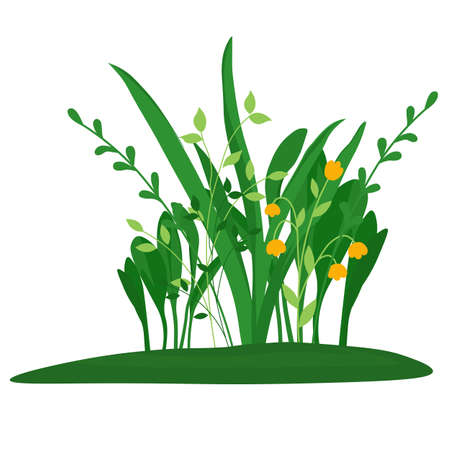Introduction to Safe Indoor Plants for Indian Homes
Creating a vibrant and healthy home environment is a cherished tradition in many Indian families. With children and elderly loved ones at the heart of our households, selecting indoor plants that are both safe and meaningful becomes essential. The lush greenery not only brings beauty and serenity but also reflects the deep-rooted Indian value of living harmoniously with nature. However, many popular houseplants can be toxic if touched or ingested by curious little hands or vulnerable elders. Therefore, it is important to choose non-toxic and culturally relevant indoor plants that uphold the spirit of Indian hospitality while ensuring the well-being of every family member. In this article, we explore why selecting safe indoor plants matters, especially in homes where generations thrive together, and how the right green choices can nurture health, positivity, and tradition under one roof.
Top Non-Toxic Indoor Plants Popular in India
When choosing indoor plants for Indian homes, especially those with children and elderly members, safety and cultural significance are essential. India’s vibrant plant culture offers a variety of non-toxic, easy-to-maintain options that bring both beauty and well-being into your living space. Below is a thoughtfully curated list of indoor plants widely cherished across India for their safety, positive energy, and health benefits.
Safe and Commonly Available Indoor Plants
| Plant Name | Local Name | Main Benefits | Safety for Kids & Elderly |
|---|---|---|---|
| Areca Palm | Suwan Chrya (সুবর্ণচর্যা) | Purifies air, adds humidity, low maintenance | Non-toxic, pet friendly, safe to touch |
| Money Plant | Pothos or Epipremnum aureum | Absorbs toxins, brings prosperity (Vastu), easy to grow in water or soil | Mildly toxic if ingested in large amounts; generally safe if kept out of reach |
| Tulsi (Holy Basil) | Tulasi (तुलसी) | Sacred plant, purifies air, used in Ayurveda for immunity boost | Completely safe; leaves are consumed in Indian households |
| Bamboo Palm | Karela Bamboo (करैला बांस) | Purifies air, requires minimal sunlight, aesthetic appeal | Non-toxic; ideal for living spaces and bedrooms |
| Aloe Vera | Ghritkumari (घृतकुमारी) | Cools the environment, medicinal uses for skin ailments, purifies air | Mildly toxic if ingested; sap can be irritating—safe when placed out of direct reach of small children |
| Spider Plant | Chlorophytum Comosum | Purifies air effectively, resilient to neglect, decorative foliage | Non-toxic; perfect for family areas and balconies |
| Peace Lily* | Spathiphyllum spp. | Purifies air, beautiful white blooms, symbolic of peace and harmony in Indian decor traditions | Mildly toxic if chewed; recommended for supervised spaces or higher shelves around children and elders who may have memory issues |
Cultural Connection & Holistic Safety Tips
In Indian homes where tradition meets modern living, these indoor plants do more than decorate—they nurture well-being. Tulsi is revered in Hindu households for its spiritual significance as well as its medicinal properties. Areca Palm and Bamboo Palm are often chosen according to Vastu Shastra principles to invite positive energy. Money Plant is considered auspicious and is commonly grown in water-filled bottles or hanging baskets near windows. While most of these plants are safe, always supervise young children around any greenery to prevent accidental ingestion. By making informed choices from this locally inspired selection, you create an uplifting home garden that brings nature’s blessings right indoors.

3. Vastu and Traditional Beliefs on Indoor Plants
In India, the placement and selection of indoor plants go far beyond aesthetics—they are deeply rooted in Vastu Shastra and traditional wisdom, guiding families towards harmony, positivity, and well-being. When considering safe indoor plants for kids and elderly family members, it is essential to understand which varieties are celebrated not only for their safety but also for their spiritual and emotional benefits within Indian homes.
Plants Blessed by Vastu for Positive Energy
According to Vastu Shastra, certain plants are known to purify the air, attract positive energy, and foster a sense of balance. Tulsi (Holy Basil) stands as a sacred symbol in countless Indian households. It is said to ward off negativity and is traditionally kept near windows or in courtyards for its healing aroma and purifying properties. Another favourite is the Money Plant (Epipremnum aureum), often grown in water-filled bottles or pots indoors, believed to bring prosperity and good luck when placed in the southeast direction.
Tradition Meets Safety
For homes with curious little ones or elderly members, safety is paramount. Plants like Aloe Vera, widely cherished for its medicinal value, are considered non-toxic and easy to maintain. The succulent’s cooling gel can be used for minor burns—an added benefit that aligns with ancient Ayurvedic practices. Similarly, the Areca Palm is highly recommended: it acts as a natural humidifier and air purifier without any toxicity concerns, making it ideal for family living spaces.
Cultural Comfort and Healing
Beyond their physical properties, these plants offer emotional comfort steeped in Indian tradition. The gentle fragrance of Jasmine (Chameli), often grown in balconies or near entrances, brings calmness and is associated with peaceful sleep—something particularly beneficial for elders. Likewise, Bamboo Palm represents resilience and adaptability, qualities revered in Indian culture. Choosing such plants ensures your home resonates with cultural values while providing a safe environment for all ages.
Selecting indoor greenery through the lens of Vastu Shastra and traditional beliefs not only safeguards your loved ones but also infuses your space with positivity, healing energies, and timeless comfort—making your home a nurturing garden of well-being.
4. Easy Care Tips for Families
Taking care of indoor plants in Indian homes is a joyful activity that brings families together, creates a fresh atmosphere, and enhances well-being for both kids and elderly members. Here are some simple and practical tips to help your plants thrive while keeping your family safe:
Watering Wisely
Most common indoor plants like Snake Plant (Sansevieria) or Money Plant (Pothos) prefer moderate watering. Overwatering can cause root rot, especially during the humid Indian monsoon season. Use your finger to check soil moisture—water only when the top inch feels dry.
Sunlight and Placement
Place your plants where they get filtered sunlight. South or east-facing windows are ideal in most Indian homes. Avoid placing pots on high shelves where children or elderly may struggle to reach, reducing the risk of accidents.
Safe Fertilizing
Opt for organic fertilizers such as vermicompost or cow dung manure, which are widely available in India and safe for children and elders. Avoid chemical fertilizers that could be harmful if touched or ingested.
Quick Reference Table: Plant Care Essentials
| Plant Name | Watering Frequency | Light Requirement | Fertilizer Type |
|---|---|---|---|
| Aloe Vera | Once a week | Bright, indirect | Organic compost |
| Areca Palm | Twice a week | Filtered sunlight | Cow dung manure |
| Tulsi (Holy Basil) | Alternate days | Direct sunlight | Vermicompost |
| Money Plant (Pothos) | When soil dries out | Indirect light | Organic compost |
| Sanke Plant (Sansevieria) | Bimonthly | Low to bright light | Mild organic fertilizer |
Pest Control the Natural Way
If you spot insects, use neem oil spray or soapy water as safe remedies instead of chemical pesticides. These options are gentle for both plants and family members.
Extra Safety Tips:
- Keep plant pots stable to prevent tipping over.
- Select non-toxic varieties to avoid accidental ingestion by curious kids or elderly with memory issues.
- If you have crawling toddlers, place small pots on raised stands but within easy adult access for watering and care.
The gentle presence of indoor greenery is a blessing in every Indian home. With mindful care routines, you create an environment where both your plants and loved ones flourish harmoniously.
5. Precautions and Potential Concerns
Guidelines for a Safe and Joyful Indoor Garden
While indoor plants bring beauty, calm, and fresh air to Indian homes, it is essential to prioritise the safety of both children and elderly family members. Each household is unique—what works well in one may need tweaks in another, especially when small kids or senior elders are around. Here are some practical precautions and tips inspired by real Indian homes:
1. Avoid Allergy Triggers
Some common indoor plants may release pollen or have strong fragrances that could trigger allergies or respiratory discomfort, especially during peak summer or monsoon season. Choose hypoallergenic plants like Areca Palm, Spider Plant, or Money Plant (Pothos), which are generally well-tolerated. Place new plants in a ventilated area at first, and observe any signs of sneezing, coughing, or itching among family members.
2. Prevent Accidental Ingestion
Kids often explore their world with their mouths, while elderly persons with memory loss might confuse plant parts for edible herbs. To minimise risk:
- Select only non-toxic varieties such as Boston Fern and Bamboo Palm.
- Avoid keeping small decorative stones or clay balls in pots that may look like candy to little ones.
- Place potentially risky plants like Aloe Vera out of reach if you cannot supervise at all times.
3. Ensure Stable Placement
In bustling Indian households, it’s easy for playful children or elders using walking aids to accidentally topple over pots. Choose sturdy planters and avoid placing them in high-traffic areas or near steps. Hanging baskets can be a lovely solution for trailing plants without creating trip hazards.
4. Maintain Proper Hygiene
Damp soil can attract moulds and mosquitoes—common concerns during humid months. Always use well-draining soil, avoid water stagnation in trays, and wipe down leaves regularly to prevent dust and allergens from accumulating.
5. Educate Your Family
Talk to your children about the difference between food plants and decorative ones—perhaps using stories from Panchatantra or local folk tales. For elders, label each pot clearly in English and the regional language (like Hindi, Tamil, Bengali) so there’s no confusion about which plants are safe to touch or use.
Final Word
With a little mindful planning rooted in Indian traditions of care and togetherness, your indoor garden will remain a source of health and happiness for every generation under your roof.
6. Engaging Kids and Elderly with Plant Activities
Creating joyful and memorable moments around safe indoor plants can foster a sense of togetherness for Indian families, especially when involving both children and elders. Plant care need not be a routine chore—it can transform into a delightful bonding and therapeutic experience that resonates with our cultural values of nurturing and community.
Fun Ways to Get Children Involved
Start by letting kids choose their favourite easy-care indoor plants such as money plant (Epipremnum aureum) or tulsi (holy basil), which are both safe and auspicious in Indian homes. Encourage them to decorate pots using traditional motifs or vibrant colours, blending art with gardening. Assigning simple tasks like watering or misting leaves helps teach responsibility while keeping the activity light-hearted and fun.
Interactive Learning Moments
Turn plant care into storytelling sessions—share folk tales about tulsi or neem, highlighting their significance in Indian culture and Ayurveda. Let children observe how plants grow, connect these changes to stories, and even track progress in a journal, making learning personal and meaningful.
Meaningful Engagement for Elders
For elderly family members, tending to indoor plants can be a soothing ritual that supports mental well-being. Invite them to share their wisdom on traditional uses of houseplants, such as betel leaf (paan) or aloe vera, sparking nostalgic conversations. Encourage gentle activities like pruning or arranging leaves for puja thalis, which allows elders to contribute without physical strain.
Bridging Generations Through Nature
Organise weekly family planting days where everyone collaborates on repotting, seed sowing, or preparing organic compost from kitchen waste—a sustainable practice deeply rooted in Indian households. These shared experiences cultivate patience, empathy, and teamwork across generations while celebrating the joy of greenery within the home.
Therapeutic Benefits for All Ages
Caring for safe indoor plants provides sensory stimulation—touching leaves, smelling herbs like mint or lemongrass—and encourages mindfulness. Whether it’s a grandparent teaching a child to recite mantras while watering tulsi, or siblings competing to see whose plant grows best, these moments nurture both relationships and wellbeing. In Indian culture, where family bonds are cherished, such activities offer a beautiful way to stay connected and grounded through nature.
7. Conclusion and Local Resources
Bringing safe indoor plants into your Indian home is more than just a touch of green—it’s a gentle promise of well-being for your loved ones, from playful little ones to beloved elders. These thoughtfully chosen, non-toxic plants invite fresh air, harmony, and beauty into your living space, making every corner bloom with health and happiness. As you step into this green journey, remember: nurturing life is as rewarding as it is soothing.
When choosing your plant companions, always seek guidance from trusted local nurseries—many in India offer expert advice tailored to our unique climate and family needs. Urban areas like Delhi, Bengaluru, Mumbai, and Chennai boast celebrated garden centres such as Lalbagh Nursery, Pune Nursery, or Sunder Nursery. For those who cherish convenience or wish to send a green gift across cities, explore reliable online platforms like Ugaoo, NurseryLive, and MyBageecha. These platforms often provide detailed plant care tips, ensuring you select the safest options for children and elders alike.
Let this be your invitation to weave nature into your family’s daily life—one safe, leafy friend at a time. Celebrate each sprout, nurture each leaf, and watch as your home transforms into a peaceful oasis where every generation can thrive together.

